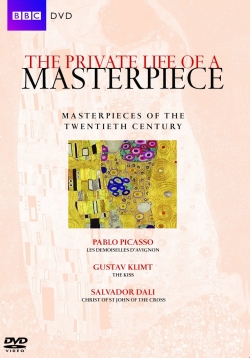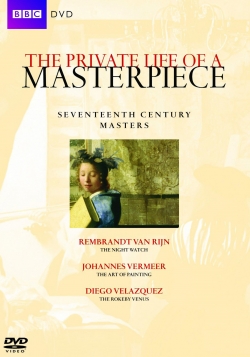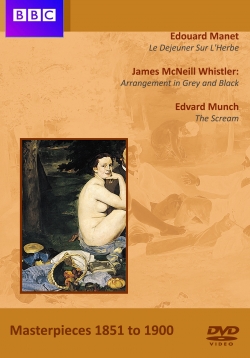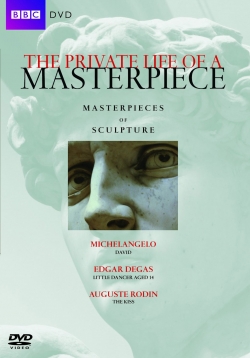The Private Life of a Masterpiece The Private Life of a Masterpiece: Renaissance Masterpieces
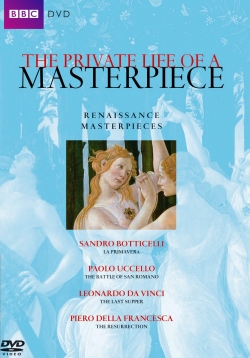
Type
Audio/Visual
Category
Art, Documentary Film
[ Browse Items ]
Publication Year
2008
Publisher
Volume
Vol. 1
Duration
187 min.
Subject
Botticelli, Sandro, -- 1444 or 1445-1510. -- Spring. Uccello, Paolo, -- 1397-1475. -- Battle of San Romano. Leonardo, -- da Vinci, -- 1452-1519. -- Last supper. Piero, -- della Francesca, -- 1416?-1492. -- Resurrection. Painting, Renaissance.
Tags
Series Name
Abstract
Episode 1: La Primavera
Sandro Botticelli's allegorical masterpiece was painted in Florence, probably in the 1480s. It was one of the first large secular works since Greek and Roman times and featured the first sensual female figures of the Renaissance in a city awash with pious Christian images. Now over half a millennium old, it remains one of the most perplexing and enigmatic of all the great paintings. Why did Botticelli -- whose previous art was confined to conventional Christian images and portraits of the wealthy and powerful -- paint the groundbreaking Primavera. This program explains how, in the 1970s, a painting fixed above an ornamental daybed cited in a centuries-old inventory from a Medici house was recognized as being La Primavera, shedding new light on its creation.
Episode 2: The Battle of San Romano
Created in Florence almost 600 years ago, this is an extraordinary record of how war was waged and an artistic breakthrough in the early Renaissance. Uccello's three paintings of the battle were the first to have the newly discovered laws of linear perspective applied to an outdoor scene. The artful arrangement of broken lances on the battlefield creates a believable sense of receding space in the midst of chaos. The paintings recount, and have themselves, a troubled history, but they still retain the power to enchant and disturb today. Uccello's style has been likened to Cubism and Futurism, his horses compared to Picasso's, and his lances to the Blue Poles of Jackson Pollock.
Episode 3: The Last Supper by Leonardo da Vinci
Perhaps the most lionized, analyzed, and parodied of all Christ-centered artworks, with almost as much controversy about how it has been restored as in how it was created. Preparatory drawings and Leonardo's own notes reveal he used live models for the disciples and two different models for Christ. Sometimes he remained on the scaffolding for the whole day, forgetting to come down to eat or drink. But on other days, he would add only a few brushstrokes. But even during Leonardo's own lifetime, The Last Supper had begun to deteriorate.
Episode 4: The Resurrection by Piero della Francesca
By common consent, this is considered one of the great religious pictures. The artist shows the risen Christ standing upright in his sarcophagus, with one foot poised on its rim. He is wearing a pink funeral shroud, and in his right hand he holds a flag with a red cross on a white background, which symbolizes his triumph over death. This is no idealized depiction of Christ. Blood continues to drip form the wound in his side, and naturalistic folds have appeared in his belly because of his raised left leg. His face is particularly striking. The bags under his staring eyes suggest that he has not slept, his nose looks flattened, and his beard is not well tended. Writer Aldous Huxley, who considered this "the greatest picture in the world," noted Christ's "physical and intellectual power." Piero painted the sleeping soldiers very close to the foreground; the unbalanced figure at the right seems about to tumble right out of the picture. By placing them in a variety of poses, the artist manages to keep them all unaware of Christ's presence.
Sandro Botticelli's allegorical masterpiece was painted in Florence, probably in the 1480s. It was one of the first large secular works since Greek and Roman times and featured the first sensual female figures of the Renaissance in a city awash with pious Christian images. Now over half a millennium old, it remains one of the most perplexing and enigmatic of all the great paintings. Why did Botticelli -- whose previous art was confined to conventional Christian images and portraits of the wealthy and powerful -- paint the groundbreaking Primavera. This program explains how, in the 1970s, a painting fixed above an ornamental daybed cited in a centuries-old inventory from a Medici house was recognized as being La Primavera, shedding new light on its creation.
Episode 2: The Battle of San Romano
Created in Florence almost 600 years ago, this is an extraordinary record of how war was waged and an artistic breakthrough in the early Renaissance. Uccello's three paintings of the battle were the first to have the newly discovered laws of linear perspective applied to an outdoor scene. The artful arrangement of broken lances on the battlefield creates a believable sense of receding space in the midst of chaos. The paintings recount, and have themselves, a troubled history, but they still retain the power to enchant and disturb today. Uccello's style has been likened to Cubism and Futurism, his horses compared to Picasso's, and his lances to the Blue Poles of Jackson Pollock.
Episode 3: The Last Supper by Leonardo da Vinci
Perhaps the most lionized, analyzed, and parodied of all Christ-centered artworks, with almost as much controversy about how it has been restored as in how it was created. Preparatory drawings and Leonardo's own notes reveal he used live models for the disciples and two different models for Christ. Sometimes he remained on the scaffolding for the whole day, forgetting to come down to eat or drink. But on other days, he would add only a few brushstrokes. But even during Leonardo's own lifetime, The Last Supper had begun to deteriorate.
Episode 4: The Resurrection by Piero della Francesca
By common consent, this is considered one of the great religious pictures. The artist shows the risen Christ standing upright in his sarcophagus, with one foot poised on its rim. He is wearing a pink funeral shroud, and in his right hand he holds a flag with a red cross on a white background, which symbolizes his triumph over death. This is no idealized depiction of Christ. Blood continues to drip form the wound in his side, and naturalistic folds have appeared in his belly because of his raised left leg. His face is particularly striking. The bags under his staring eyes suggest that he has not slept, his nose looks flattened, and his beard is not well tended. Writer Aldous Huxley, who considered this "the greatest picture in the world," noted Christ's "physical and intellectual power." Piero painted the sleeping soldiers very close to the foreground; the unbalanced figure at the right seems about to tumble right out of the picture. By placing them in a variety of poses, the artist manages to keep them all unaware of Christ's presence.
Description
1 videodisc (ca. 197 min.) : sd., col. with b&w sequences ; 4 3/4 in. Each segment is aprox. 50 min
Audio: English, Subtitles in English.
Audio: English, Subtitles in English.
Number of Copies
2
| Library | Accession No | Call No | Copy No | Edition | Location | Availability |
|---|---|---|---|---|---|---|
| Main | 553 | DVD 700/PRI v.1 | 1 | Shelf | No | |
| Main | 554 | DVD 700/PRI v.1 | 2 | Shelf | Yes |
